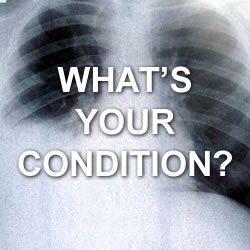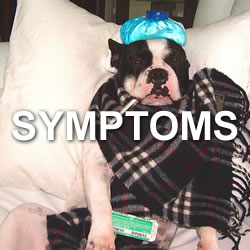MERS
A camel that always moves with the camel caravan cannot discover the beauties of the unknown oases - Mehmet Murat ildan
.jpg)
image by: Hart van Nederland
HWN Recommends
Camels and bats and MERS, oh my
WHEN a man with what looked like a nasty case of flu showed up at Community Hospital in Munster, Indiana on April 28th, the facility did what it always does with infectious-disease patients: it isolated him in a room with heavily filtered negative air-flow and treated him as if he had the plague. Which he did, or at least a modern-day equivalent.
A health-care worker, the man had just flown in from Saudi Arabia—ground zero for the coronavirus that causes Middle East respiratory syndrome, or MERS. The hospital took extreme precautions in handling the patient, and used the RFID tags that all its staff wear to track those who had been near him. About 50 were put under home isolation,…
Resources
 Blood from MERS Virus Survivors May Help Target Treatments
Blood from MERS Virus Survivors May Help Target Treatments
SINCE CAUSING MAJOR outbreaks in Saudi Arabia in 2014 and in Korea a year later, the virus that causes Middle East Respiratory Syndrome is laying low. But it hasn't disappeared: A cluster of 34 cases cropped up in July in Riyadh, Saudi Arabia’s capital. The dromedary camels who harbored the virus for more than 20 years aren’t going anywhere, and neither is MERS.
MERS May Be A Concern But It’s Not SARS
Over the nearly two years since the causative virus, the MERS coronavirus (MERS-CoV) was identified, researchers have gained significant insight into the ongoing epidemic. They have also seen just how this virus compares with SARS and the answer always appears to be the same. While MERS is a bad actor, it is no SARS and most likely will not cause a pandemic.
Muddled about MERS? Here's A Quick Guide
As with SARS, fruit bats are increasingly thought to be the reservoir for MERS—specifically, the Egyptian tomb bat. The most intriguing hypothesis I’ve read is that infected bats contaminate date palms, thus exposing farm workers who have to climb the trees to pollinate them and then perform further work up in the trees to maximize yields of the fruit. Laurie Garrett likens this to the transmission of Nipah virus by bats in Bangladesh, via palm oil collected near the tree tops.
The deadly MERS virus outbreak, explained
The good news, however, is that MERS historically hasn't spread far beyond hospitals and the households of those who are ill.
What is the MERS virus, and is it going to kill us all?
Although MERS doesn't appear to be exceptionally contagious, public-health experts have been tracking it closely because the disease has such a high death rate. So far, about one-third of the people with confirmed cases have died. The majority of MERS has been in Saudi Arabia, although it's spread to 18 other countries, including two recent cases in the US.
Who Gets to Name New Diseases?
The tangled origins of a deadly new virus called MERS-CoV.
A new coronavirus, should you care?
We don't know where this virus came from nor why only now are we seeing it. There is also a chance that this virus could have always been in humans but that only due to sensitive lab tests like PCR and deep sequencing we were able to detect it.
Could Camels Save us From MERS?
Many people now know that it was camels which caused the alarming spread of Middle East Respiratory Syndrome (MERS) seen last year, but did you know that it was also suspected that those same beasts of burden could protect us from the debilitating disease?
Human Coronavirus EMC Is Not the Same as Severe Acute Respiratory Syndrome Coronavirus
A newly identified betacoronavirus, human coronavirus EMC (HCoV-EMC), has been isolated from several patients with respiratory and renal disease in the Middle East. While only a few infected patients have been identified, the mortality of the infection is greater than 50%. Like its better-known cousin severe acute respiratory syndrome coronavirus (SARS-CoV), HCoV-EMC appears to have originated from bats.
Introducing the Brand New "Threat to the Entire World," MERS!
MERS belongs to the Coronavirus family - a.k.a. the troublesome family of viruses responsible for SARS and the common cold. MERS, like SARS, erupted onto the world stage rather abruptly. In a little over a year...
Mers: The new coronavirus explained
13 February 2013: A new respiratory illness similar to the Sars virus that spread globally in 2003 and killed hundreds of people has been identified...
Middle East Respiratory Syndrome Coronavirus Infection in Dromedary Camels in Saudi Arabia
This study was undertaken to determine the historical and current prevalence of Middle East respiratory syndrome (MERS) coronavirus infection in dromedary camels and other livestock in the Kingdom of Saudi Arabia, where the index case and the majority of cases of MERS have been reported.
More on MERS-CoV and the camel link
It always seemed strange, though, for camels to be the ultimate source, leaving lingering questions about whether there is another source or where camels got exposed to the virus in the first place. Some have focused their attention on bats (which were ultimately the source of the related SARS-coronavirus).
Possible Pandemic: Is MERS the New SARS?
Virus hunter Nathan Wolfe tells us about a deadly new virus.
South Korea MERS Outbreak Began With a Cough
First patient moved around hospitals for days seeking diagnosis—and infecting others
The Camel Did It: Scientists Nail Down Source Of Middle East Virus
In the two years since Middle East respiratory syndrome was first diagnosed in people, scientists have struggled to figure out how we catch the deadly virus. Some blamed bats. Others pointed at camels. Now scientists in Saudi Arabia offer the strongest evidence yet that the one-humped dromedaries can indeed spread the MERS virus — which has infected more than 800 people on four continents, including two men in the U.S.
U.N. experts warn of 'critical knowledge gaps' on Saudi MERS virus
Cases of Middle East Respiratory Syndrome (MERS) are surging again, but Saudi health officials and scientists appear unable to explain where the infections start and how they spread, the UN experts said.
Where Do Scary Diseases Like SARS and MERS Come From? Animals
Middle-Eastern Respiratory Syndrome, or MERS, has a lot in common with other emerging disease threats: we probably got it from animals.
Where does MERS-CoV hide?
Coronaviruses represent a threat to humans, as evidenced during the 2002/2003 coronavirus infection of Severe acute respiratory syndrome or SARS-CoV. The SARS-CoV caused more than 8,000 human infections with a mortality rate of 10% in a total of 37 countries. Ten years later, a new human coronavirus also causing respiratory syndrome, MERS-CoV (Middle East respiratory syndrome) emerged in Saudi Arabia.
Why Is MERS So Contagious?
For scientists who are tracking the latest outbreak, examining the environment where MERS is spreading is only a piece of a larger puzzle. They’re still racing to understand the virus itself. Researchers know that, like other respiratory viruses, MERS is highly contagious because it is spread through droplets—from when a person coughs or sneezes, for instance. But other mechanics of how the virus behaves are a mystery.
 Camels and bats and MERS, oh my
Camels and bats and MERS, oh my
MERS is something of a medical mystery. The disease is widely found in dromedary camels, which have long carried the virus. In the Middle East camels are worked, raced and even kept as pets.
California Department of Public Health
Common symptoms in patients with MERS-CoV include a respiratory illness with fever, cough, shortness of breath, and breathing difficulties. Most patients have had pneumonia. Some patients have also had kidney failure. Outbreaks in health care facilities have been frequent. Patients with underlying co-morbidities such as diabetes, heart or lung disease, or immunosuppression, appear to be at the highest risk of developing severe disease. Fortunately, it appears that the virus is not readily transmitted person-to-person.
CDC
Middle East Respiratory Syndrome (MERS) is a viral respiratory illness that is new to humans. It was first reported in Saudi Arabia in 2012 and has since spread to several other countries, including the United States. Most people infected with MERS-CoV developed severe acute respiratory illness, including fever, cough, and shortness of breath. Many of them have died.
CIDRAP
Keeping you up to date with the latest outbreaks.
Eurosurveillance
Phylogenetic analysis and high MERS-CoV viral load in nasal swabs of dromedary camels suggest local zoonotic transmission through the respiratory route.
MedicineNet
MERS-CoV is a type of coronavirus, similar to the one that caused SARS (severe acute respiratory syndrome) or the common cold. MERS-CoV has not been previously identified in humans. Like the SARS virus, MERS-CoV is most similar to coronaviruses found in bats. It has been detected in camels, and regular handling of these animals may pose a major risk of human transmissions. It has not been detected in other livestock, but several cases of MERS-CoV in those who handle camels have been reported.
NPR
Listen to some of the latest news.
Sabin Vaccine Institute
Past and ongoing pandemic threats from coronaviruses have prompted a new urgency to develop a pan-coronavirus vaccine as a global countermeasure. Both SARS and MERS are classified as Category C biodefense agents by the U.S. National Institutes of Health, with an intense capacity to inflict devastating disease outcomes and disrupt local, national and global economies.
UpToDate
MERS-CoV is closely related to coronaviruses found in bats, suggesting that bats might be a reservoir of MERS-CoV. Camels likely serve as hosts for MERS-CoV. The presence of case clusters strongly suggests that human-to-human transmission occurs.
WHO
The full picture on the source is not yet clear. Strains of MERS‐CoV that match human strains have been isolated from camels in Egypt, Qatar, and Saudi Arabia. These and other studies have found MERS‐CoV antibodies in camels across Africa and the Middle East.

Introducing Stitches!
Your Path to Meaningful Connections in the World of Health and Medicine
Connect, Collaborate, and Engage!
Coming Soon - Stitches, the innovative chat app from the creators of HWN. Join meaningful conversations on health and medical topics. Share text, images, and videos seamlessly. Connect directly within HWN's topic pages and articles.













